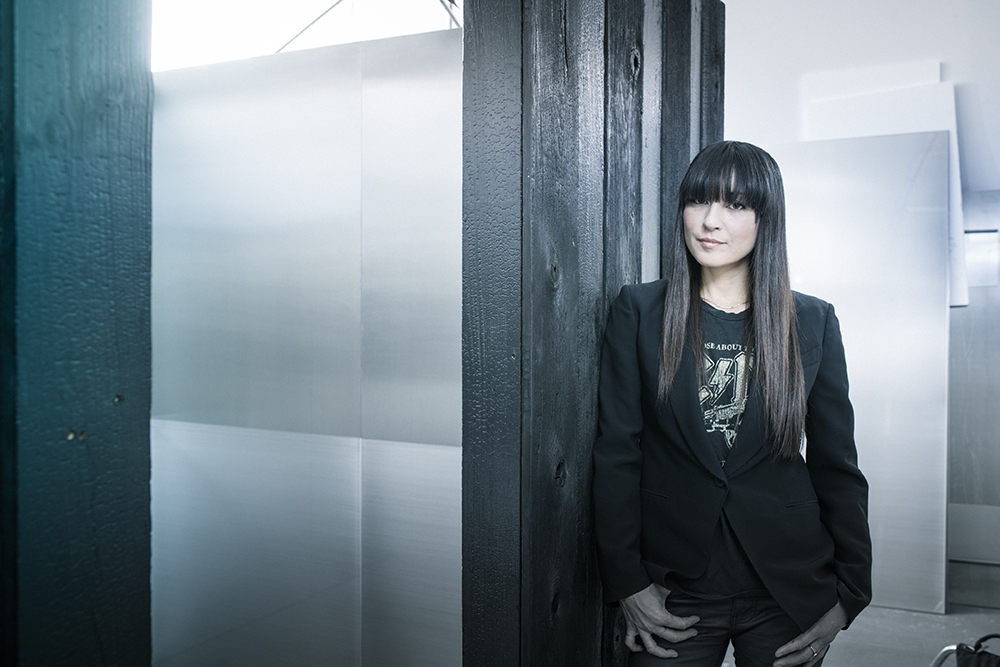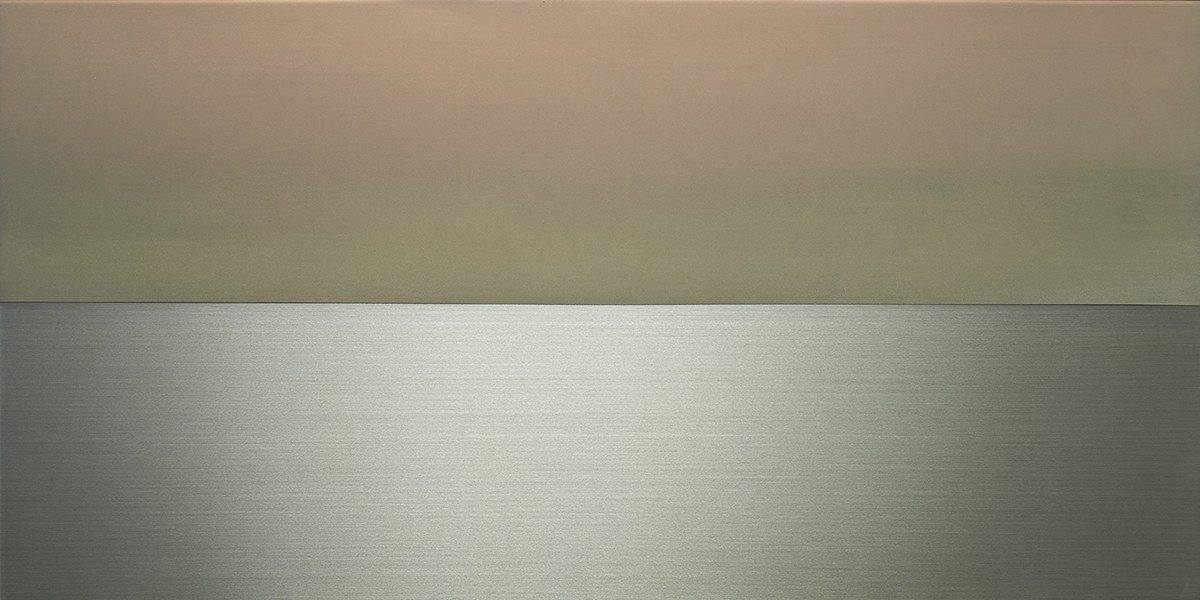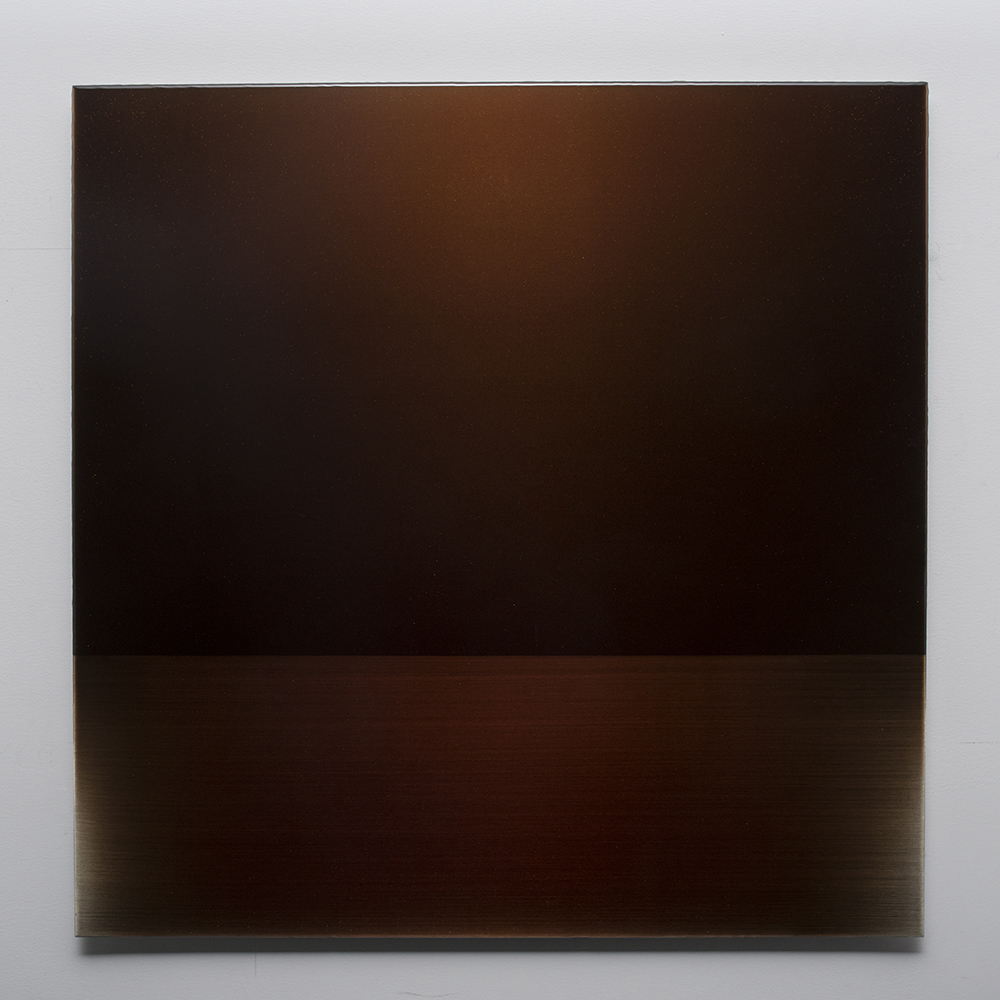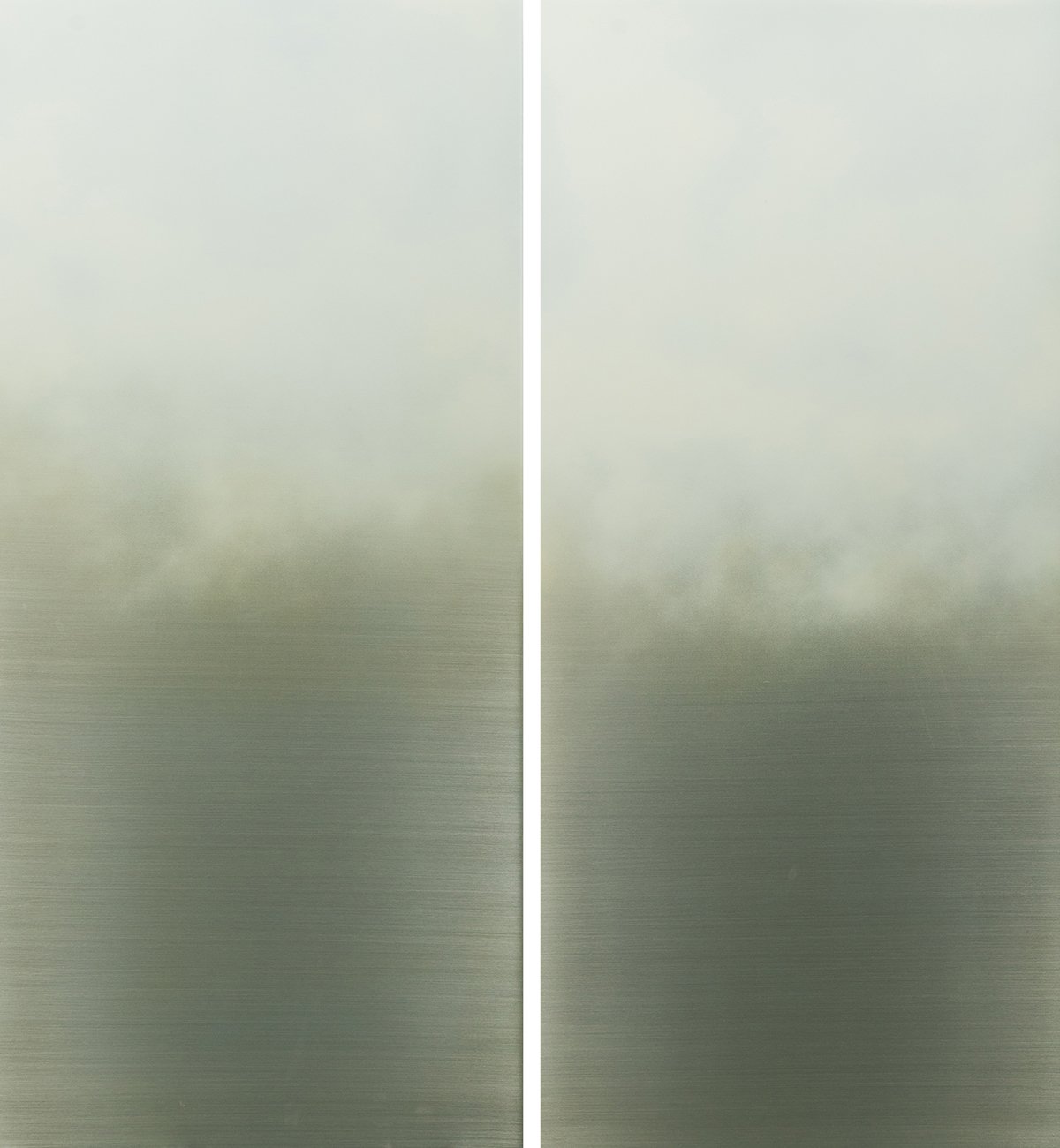Art & Exhibitions
artnet Asks: Artist Miya Ando on Growing Up and Working Hard
Having a work ethic means going to the studio seven days a week.

Having a work ethic means going to the studio seven days a week.

Artnet News

The work of New York-based artist Miya Ando has been guided by strong family relationships, a deep connection to nature, and time spent living in a Buddhist temple. From a young age her parents encouraged her to make art, and Ando eventually began working with aluminum and steel, which have become her signature materials. The artist maintains a rigid work schedule, and can be found in her Long Island City studio seven days a week. Covering the walls from floor to ceiling are large metallic works, many of which will be featured by Sundaram Tagore Gallery in her upcoming show, Sora/Ku (Sky/Emptiness), first opening in Hong Kong on September 23.
Where did you grow up?
For part of my childhood, I lived on 25 acres of redwood forest in the Santa Cruz Mountains. It was very off-the-grid. We had a generator, a well, and no television, so I spent a lot of time running around outside and making arts and crafts. The other part of my childhood, I lived in Japan. My grandfather is the head priest of a Buddhist temple, and I lived there with my family on and off.

Miya Ando, Ama No Gawa (Milky Way or The River of Stars in Heaven) (2015). Pigment, mineral dust, urethane, resin, aluminum. 24 x 96 in.
How did you first get into art, and the type of art you make now?
My parents encouraged my sister and me to create art. I was always hanging out sewing things, beading, drawing, and painting. We also had a potter’s wheel and a kiln.
After graduate school, I became an apprentice to a master metalsmith in Japan. Once I finished in 2002, I started to make paintings on sheets of steel. For the first eight years, I used very simple colors and a lot of black.
How do you make your work?
I work with chemicals, fire, and patinas to transform the surface coloration and the texture of metal. I often use anodization, where an electrical current is passed through a bath in which a polished piece of metal sits. This creates an oxide layer and allows it to retain dye. To make the metals harder, I also grow clear sapphire crystals on the surface. They’re microscopic, but make the surface the same strength as a sapphire crystal. Then I mix my own colors and paint the metal in a watercolor style. After, it is sealed so that the color becomes a permanent resident of the metal.
It’s a heavy process, which lends itself to the meaning of the work. All things are transitory, and the way the reflection of light shifts as you walk affects the way you see these works.

Miya Ando, Autumn Gold (2015). Pigment, urethane, resin, aluminum. 24 x 48 in.
What does an average day in the studio look like for you?
My studio practice is strong. I’ve worked seven days a week since 2002. I get up very early and usually read the news, write emails, drink some coffee, and then get to the studio around nine. I never work past like nine at night, though. I think a rigorous studio practice is the foundation of an artist. You have to go in and exercise your mind.
What do you do when you first get to the studio? Is there anything you like to start with?
Oh, that depends. For the past six months I’ve been working towards my show, Sora/Ku (Sky/Emptiness). But I think work comes out of work, so when I finish a group of paintings, I move on to the next evolution of those paintings. The compositions of my works are distilled in a limited sort of vocabulary, but some of the techniques are complicated to execute. I feel fortunate to have space to work where I can spread out and work on many paintings at the same time.

Miya Ando, Dark Topaz (2015). Pigment, dye, urethane, resin. 36 x 36 in.
What has been your greatest achievement thus far?
I categorize finished projects into different realms, so I really don’t have a hierarchy of achievement. I have been really blessed with my career so far, and have been allotted many opportunities to create public art, such as the World Trade Center memorial sculpture Since 9/11 in London.
One of my achievements has been creating paintings based on Tibetan prayer flags. They are sold at auction and 100% of the proceeds are donated to the Tibetan Nun’s Project. I have done this two years in a row, and in the first year, we were able to feed, house, educate and clothe 27 nuns for a year. To me, that is an achievement in my soul. As a Buddhist and a woman, I believe in the freedom of religious expression.
Outside of the art realm, what are some of your other hobbies?
My hobby is drinking coffee all day long. I also love plants, going to the beach, and being in the woods. I feel a lot of my works are based in nature. But the first thing I want to do when I’m not working is hang out with my friends and family.

Maya Ando, White Yellow Diptych (2015). Pigment, urethane, resin, aluminum. 48 x 48 in.
If you could live anywhere for the rest of your life which place would you choose?
Here. I love being here in New York and in my studio. I think the city is really encouraging and cultivating. It would be very difficult to do this exact thing elsewhere. I’m also supported here by a lot of awesome people. Although, now that I think about it, I would love to live 10 minutes away from my mom in California. Family is so important to me. You can have all the achievements in the world, but they mean nothing if you can’t share them with loved ones.
Do you listen to music while working?
It depends on what I’m doing. Sometimes, I don’t even notice that music is on. My top three musical artists are probably Boards of Canada, Led Zeppelin, and Fugazi.
If you could have dinner with anyone, with whom would it be?
My grandmother, who passed away. I grew up with her and would give anything to sit down with her again.